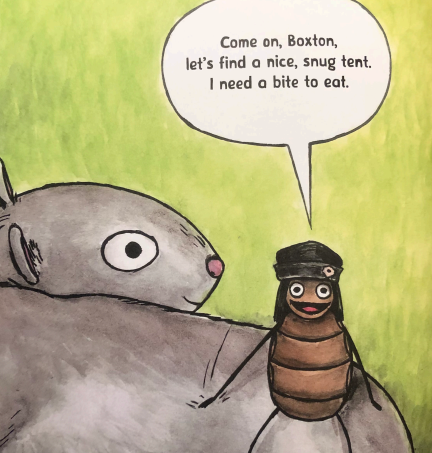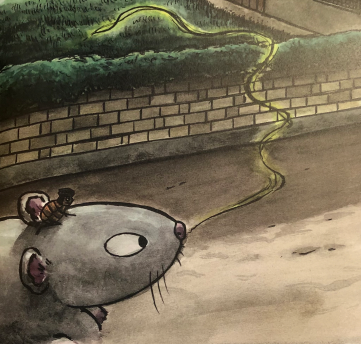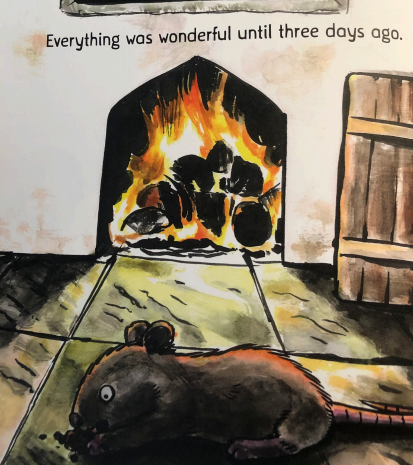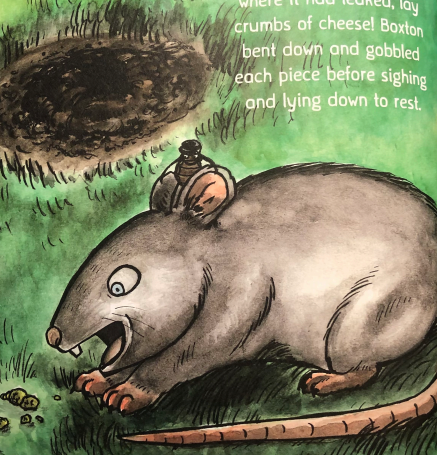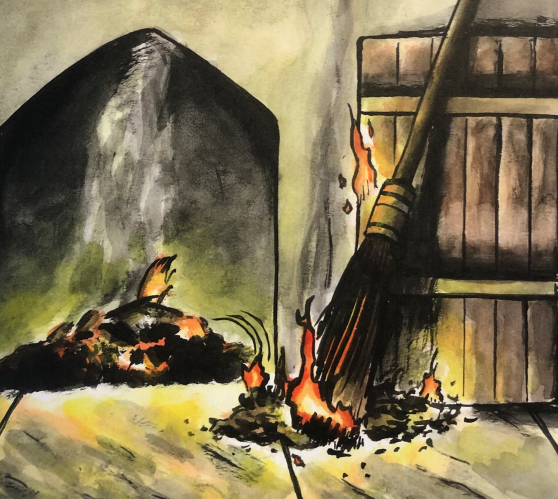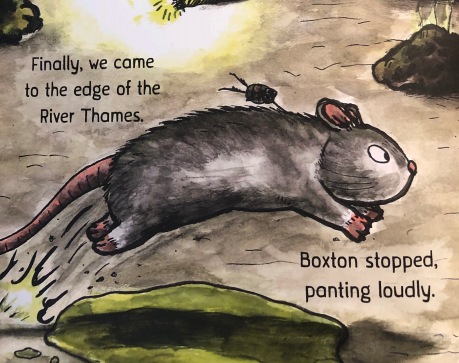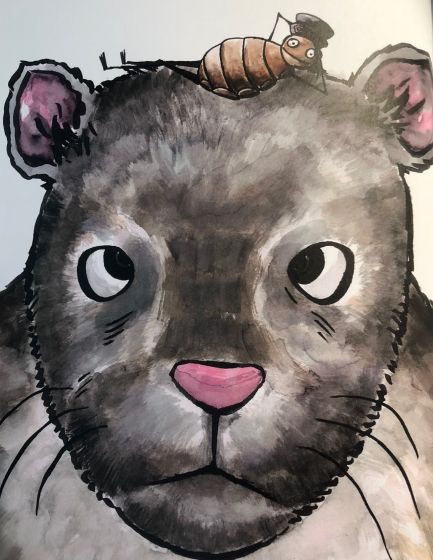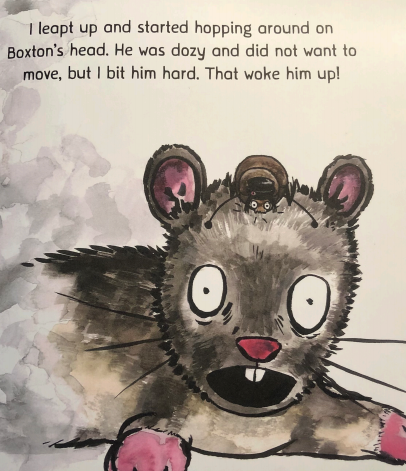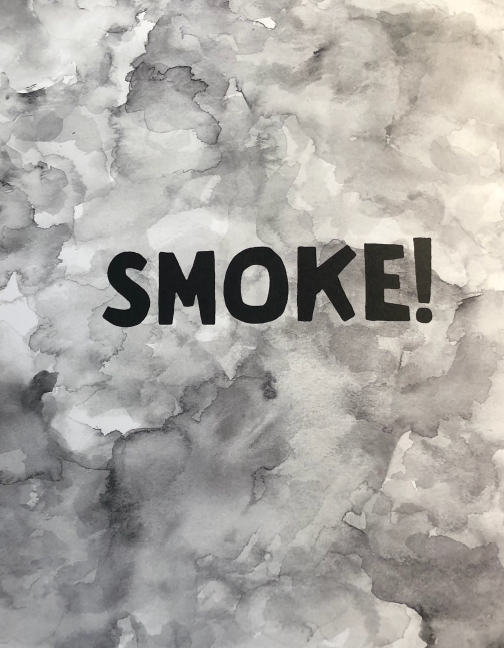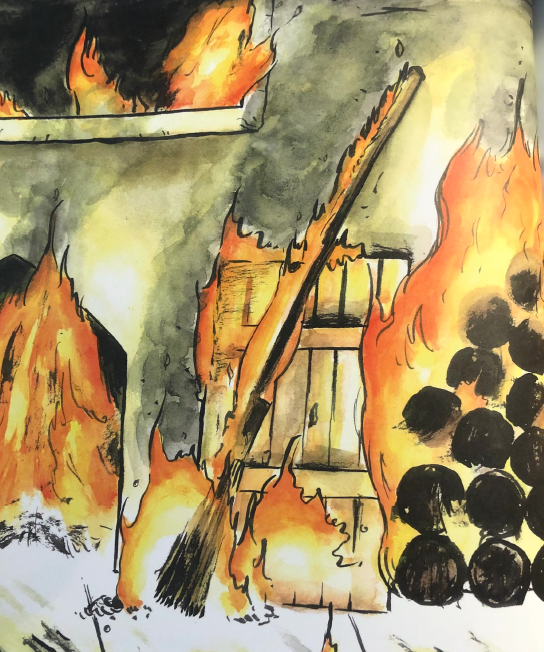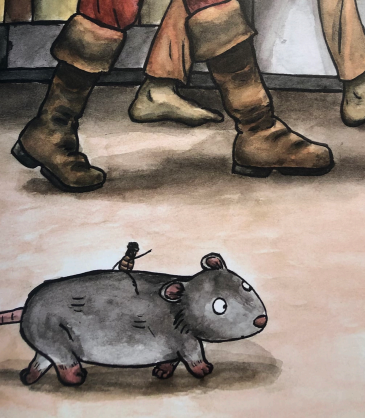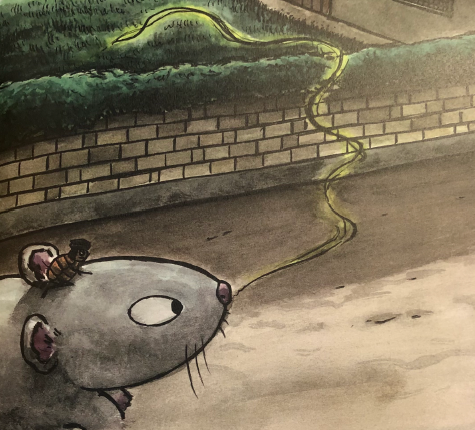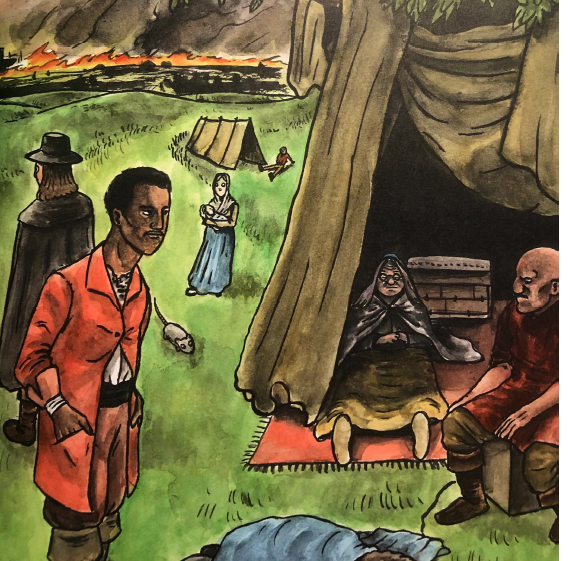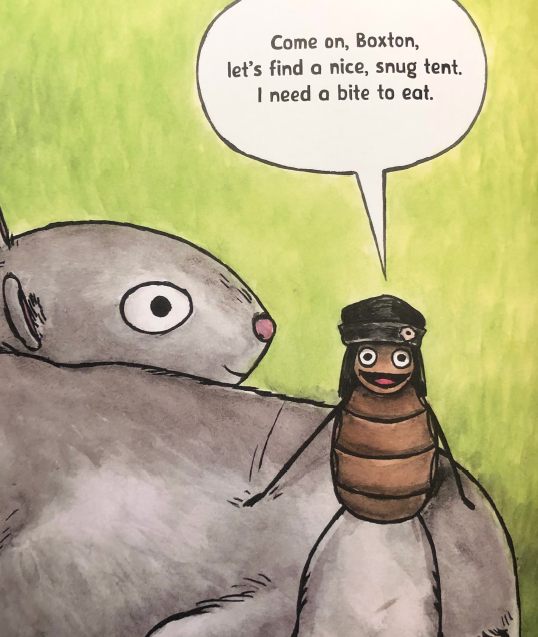Year 1 English Home Learning Week beginning 8th February 2021
Hi Year One,
I hope you have had a lovely weekend. It was great to speak to you last week and hear all about your learning at home. I cannot wait to see you on our class zoom this week. This is on Monday morning at 10am.
Thank you for sending in your super work, I have read some fantastic sentences. Boxton the rat has had quite the adventure! I can see you have been using your phonics to help you to segment for spelling and you have been remembering to leave spaces between your words. Well done for punctuating your sentences with capital letters and full-stops!
This week, we are going to be writing the story of Vlad and Boxton as they witness The Great Fire of London back in 1666. We will be retelling the story before focusing in on the beginning, middle and ending of the story. We will be learning all about verbs and their important job within a sentence during our starters. We can then make sure we use some super verbs in our own sentences when writing our story. I really cannot wait to read your stories this week. Be sure to email your work so I can give you feedback. Enjoy this week and speak soon.
Monday
Phonics
Let’s begin by recalling our phase 5 sounds. Click on the video below.
Now read these words below - what sound is the letter ‘y’ making?
yes my yet sky by you reply spying frying yellow
Write and sort these words according to the sound made by the letter ‘y’. Add buttons and bars to your words and blend.
Now read this sentence.
I fly in the sky.
Reading
Time for ten minutes of reading. Today, I would like you to read your reading book or an online book at your book band. Click here for an online book. When you have read your book, try retelling the key events or information to a member of your family. Remember to include some detail.
English
We are going to begin today’s lesson by sequencing some pictures from the story of Vlad and the Great Fire of London. Look at the images below, can you order them from the beginning of the story to the end?
We are now going to locate some words in the story by scanning the text. When we scan we keep the word we are looking for in our head whilst we search.
We are going to use our finger to run along the text to help us find the word or words we are looking for. We begin at the top of the text or page and work our way down. If we get to the bottom without finding our word, we can scan back up to the top of the text to look again.
Try with this text. Can you locate the word ‘feasted’. Read the sentence with this word in. What do you think ‘feasted’ means?
Now try to locate the word ‘squeezed’ on this page of text.
Let’s try scanning for the word ‘clung’. what does it mean in this sentence?
The words we have located today are called verbs. Verbs are used to describe actions, feelings or something that is happening. All sentences must contain a verb. This week, we are going to be looking at verbs that describe action, that is doing something. We will continue to learn about verbs in tomorrow’s lesson.
Tuesday
Phonics
Let’s begin by reading our high frequency words.
Read these words below.
happy very funny merry crunchy
What sound is the letter ‘y’ making? These words have more than one syllable. Read again and clap each syllable. In these words the letter ‘y’ is making an ‘ee’ sound. The letter ‘y’ is at the end of these two-syllable words. Can you think of any other two-syllable words ending with the letter ‘y’.
Make a list of words ending in the letter ‘y’ noticing the sound it makes. You may want to do this by looking through a book for words ending with the letter ‘y’.
Read this sentence and say three times, now try writing it without looking.
Billy and Molly are happy.
Reading
Time for some reading. Today, I would like you to read one of the texts below. Choose one that you are able to read independently. Use your phonics knowledge to help you to decode any unfamiliar words. Say the sounds and squash together to blend. Tomorrow, we will read again and answer the questions.
Text 1 - I can
Text 2 - The Big Turnip
Text 3 - The Queen’s Elephant
Text 4 - The Great White Shark
English
Starter: What is a verb? Watch this short video clip by clicking on the image below.
During the week, we will be identifying verbs in the text and using interesting verbs in our own sentences.
Today, we are going to write the beginning of our story about Boxton and Vlad. Think about the things that Boxton and Vlad do at the beginning of the story. Talk about it now. Use the pictures from Monday’s lesson to help. Get out your story map as this will help you too.
Here are some pictures from the beginning of the story. We can use these to help write our sentences. We are going to use story language to begin our story.
Here is the beginning of my story:
Almost four-hundred years ago, there lived a grey rat called Boxton and a cheeky flea named Vlad. They were the very best of friends. Boxton loved to feast on delicious food and Vlad enjoyed biting people. This is how they spent most of their days.
Late one afternoon, Boxton and Vlad sneaked into the bakery on Pudding Lane. It was perfect in there! The warm floor was covered with a sprinkling of tasty breadcrumbs. Boxton settled down and began to gobble up the breadcrumbs.
You are going to write the beginning of the story today. Introduce the reader to Boxton and Vlad and tell them about their arrival at the bakery on Pudding Lane. Begin by saying your sentence three times before you begin to write. This will help you to remember it. Now have a go at writing your sentence, listening carefully for the sounds and leaving spaces between words.
Year 1 children, you should aim to write two-four sentences for the beginning of your story. Remember to begin your sentence with a capital letter and end with a full-stop. For extra support, try saying a sentence with a grown-up at home and then writing together.
Year 2 children, you should aim to write four-six sentences for the beginning of your story. I would like to see some expanded noun phrases, for example, ‘the delicious breadcrumbs’, or ‘the warm, cosy floor’. Remember to begin your sentences with capital letters and end with a full-stop, question mark or exclamation mark depending on the type of sentence you use.
Wednesday
Phonics
Begin by spelling the following words. Write the word once and check the spelling. Now see how many times you can write in 30 seconds.
said have like come some
Read these words containing the grapheme ‘a’. What sound is it making. Using your robot arms to blend.
Look at these words:
wash want wasp what squash
Notice the sound made by the letter ‘a’.
The rule is that an ‘a’ after a ‘w’ or ‘qu’ is usually pronounced like ‘o’ in hot.
Read this sentence, sounding out and blending when you need to.
I have a wash in the bath.
Reading
Choose the text that you read yesterday and read again. Now have a go at answering the questions. Can you locate the information in the text to help you answer the questions. Try scanning the text, like we did on Monday, to find key words.
Text 1 - I can
Text 2 - The Big Turnip
Text 3 - The Queen’s Elephant
Text 4 - The Great White Shark
English
Starter: Let’s think about verbs. What is a verb? What job does it do? Use your learning from yesterday’s starter to help.
Read this sentence: Boxton ran through the streets of London. Which word is the verb? It is ran. We are going to change the verb, ran, to a more interesting verb. Read the following verbs, which could we use to replace ran? Have a think and write the sentence again using your chosen verb.
scrambled raced crept hurried wandered
Today, we are going to continue writing our story about Boxton and Vlad. Read through your writing from yesterday. What happens next? What are you going to include in the middle part of your story. Get out your story map to help. Here are some pictures to support you.
Year 1 children, you should aim to write two-four sentences for the middle of your story. Remember to begin your sentence with a capital letter and end with a full-stop. For extra support, try saying a sentence with a grown-up at home and then writing together.
Year 2 children, you should aim to write four-six sentences for the middle of your story. Think carefully about your word choices. Try to include some interesting verbs. Remember to begin your sentences with capital letters and end with a full-stop, question mark or exclamation mark depending on the type of sentence you use.
Word bank:
shocked frightened fire burning blazing hurried raced escaped scampered cobbled streets cheese Samuel Pepys flames ash inferno
Thursday
Phonics
Read the graphemes below recalling the sounds.
Look at the words we read yesterday. Today, I would like you to sort the words into lists based on the sound made by the letter ‘a’.
Now read this sentence and say three times. Now you have a go at writing it.
Squash the acorn.
Reading
For today’s ten minutes of reading, you are going to choose a book of your choice to share with a member of your family. Talk about your likes and dislikes. What are your favourite phrases or sentences? Are there any words that you particularly like?
English
Starter: Just like yesterday, we are going to try substituting the verb in our sentence for a more interesting verb, a verb that gives precise information to the reader.
Here is our sentence:
Boxton ate the delicious breadcrumbs.
Can you spot the verb? Try exchanging it for one of the verbs below. We are going to swap the verb ‘ate’.
nibbled devoured gobbled chomped demolished
Get out your writing from yesterday. Read through the beginning and middle of your story. Think about where you are up to. Look at your story map. If you need to, you could go back and listen to the story again for a quick recap. Click here to go back to the page with our story on.
You are going to write the ending of your story today. Talk through the events in these pictures and think about what Boxton and Vlad are doing. Where do they end up?
Say your sentence before you write it. Make sure it follows on from your writing yesterday. Read the ending to my story to help.
After gobbling up all of the cheese, Boxton and Vlad slowly made their way back out onto the street. They joined the crowds of people escaping the great fire. In no time at all, they reached the green fields. Flames were burning brightly in the distance but here they were safe. They watched people setting up shelters made from warm blankets. Boxton and Vlad felt happy again, soon they would be feasting on tasty rubbish and having a bite to eat.
Begin to write the ending to your story. I cannot wait to read it!
Friday
Phonics
Let’s begin with some blending. Click here.
Today we are going to look at some homographs. Homographs are words that look the same but are are pronounced differently depending on the meaning and the context of the sentence.
Read the sentences below. Try reading with the incorrect pronunciation - does it make sense?
Wind the bobbin up!
She will read it to her little brother.
The wind blew the leaves off the trees.
You have to bow when you meet the queen.
He read about the frightening monster.
Robin Hood used a bow and arrows.
Now it is your turn to write some sentences using the homographs we have just learned. wind read bow
Reading
For your ten minute read today, choose one of the following texts to read. Make sure you select a text that you can mostly read independently so that you can use your decoding skills. If you reach a word that is new to you, remember to try one of your decoding strategies. You could use your phonics - try sounding out and blending. You could look for clues in the pictures or think about what you have just read. You could go back to the beginning of the sentence and try again - think about a word that would make sense. Do you need to chunk the word up into parts?
Text 1 - The Pup in the Mud
Text 2 - Zoom to the Moon
Text 3 - The Whoopsit
Text 4 - Paul the Lucky Octopus
English
Today’s lesson is going to be a chance for you to complete your story about Boxton and Vlad if you haven’t already. If you have, then it is time to read through your writing, checking it makes sense. Now check to see if you have used punctuation. Have you remembered capital letters for the beginning of your sentences and for names of characters and places? Have you ended sentences with a full-stop, question mark or exclamation mark?
You may choose to write a final draft of your story, using your best handwriting.
Ask your grown-up to send a picture of your story to Mrs Claxton or Miss Hughes. We would love to see your fantastic writing and celebrate your hard work.

